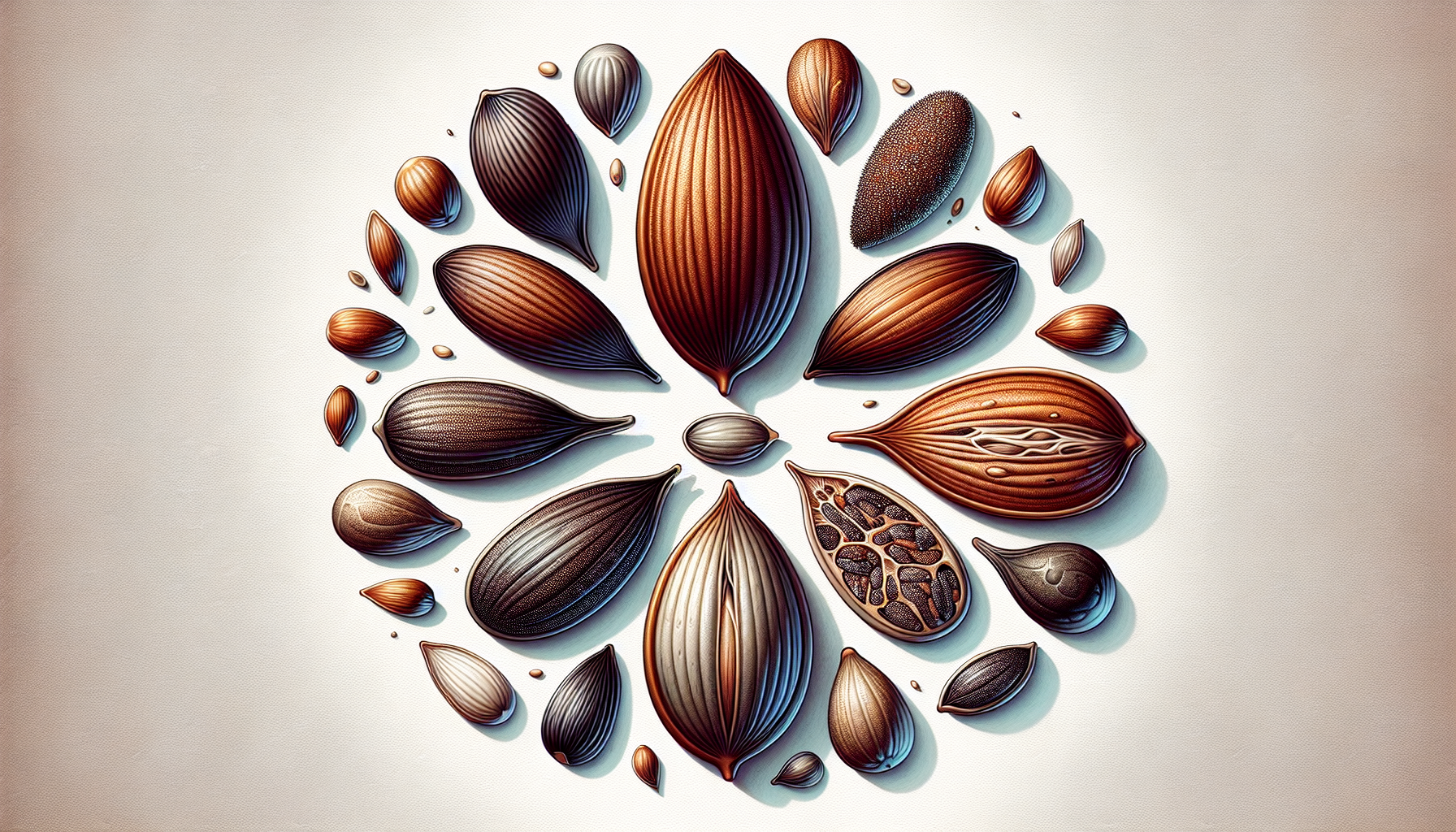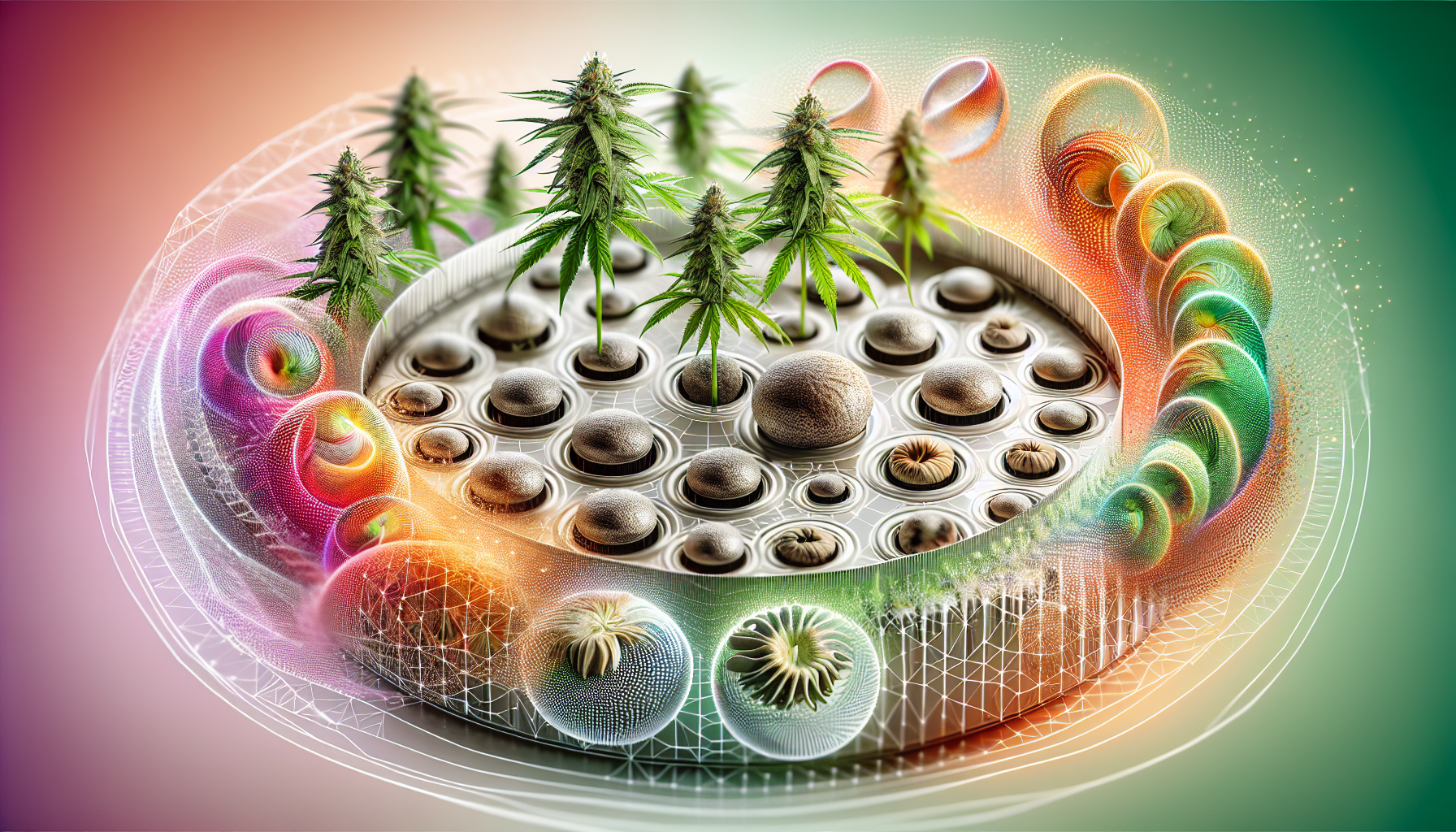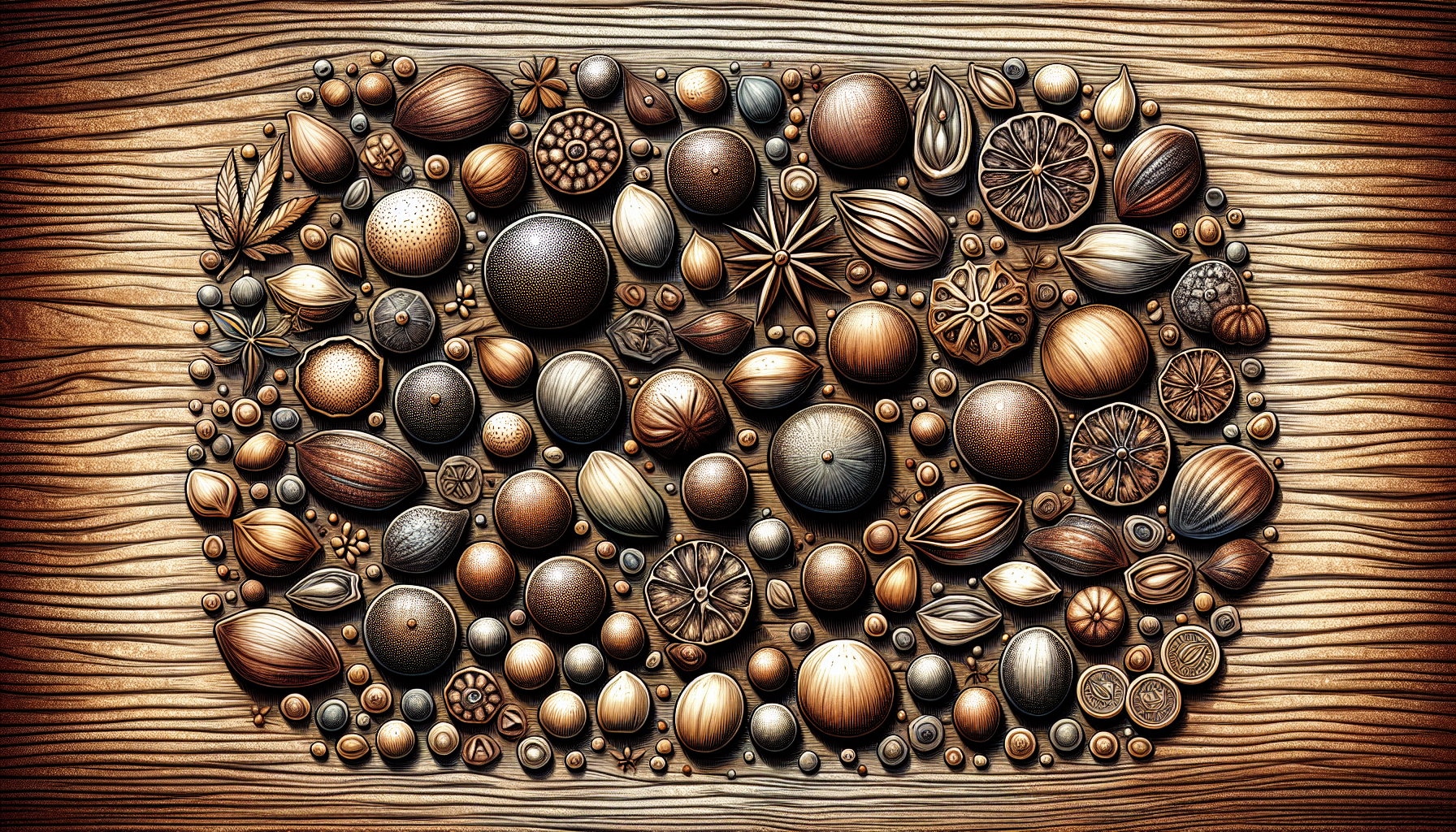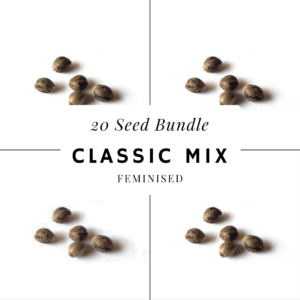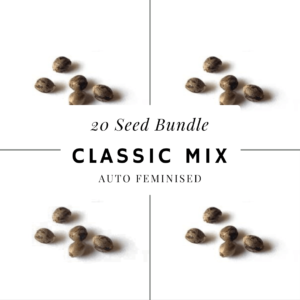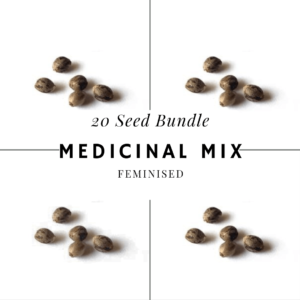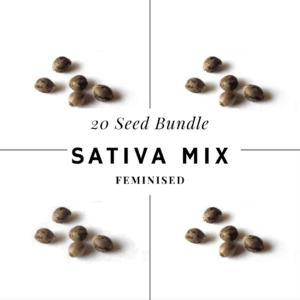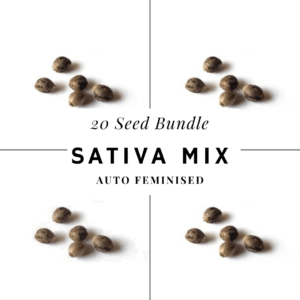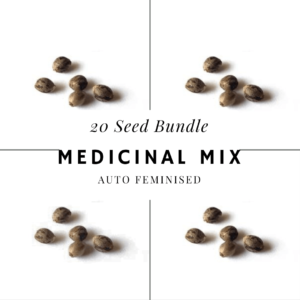Are you looking to collect robust premium, and quality marijuana seeds? Understanding the differences between feminized, auto-flowering, and regular cannabis seeds is crucial to achieving your seed-saving goals. Read on to learn the fundamental aspects of cannabis seed selection and care to ensure a successful and rewarding experience.
Key Takeaways
-
Cannabis seeds, categorised into regular, feminised, and auto-flowering types, are the beginning point for cultivating cannabis plants with specific traits such as potency, flavour, and aroma, determined by their genetic code and breeding.
-
The quality of cannabis seeds is of paramount importance as it directly influences plant health, cannabinoid profiles, yield, and resistance to adverse conditions, thus affecting the consistency and efficacy of the end product.
-
Proper care in the cultivation stages, including seed selection based on cultivation goals, storage, germination, plant care, and legal compliance with local regulations, is vital for the successful and legal cultivation of high-quality cannabis plants.
Understanding Quality Cannabis Seeds
Cannabis seeds, also known as weed seeds, are small, oval-shaped fruits that encapsulate life in its most fundamental form. Inside their hard protective outer layer, they carry an embryo with the plant’s genetic code and nutrients essential for early growth. While their size and colour may vary, these differences do not influence the germination potential or the future plant’s size.
The wondrous world of cannabis seeds is vast and varied, with three main types:
1- Regular seeds: can produce either male or female cannabis plants, just as nature intended.
2- Feminized seeds: manipulated to produce only female plants, maximising the production of cannabinoid-rich buds.
3- Auto-flowering seeds: result of clever breeding techniques that make them flower independently of the light cycle, offering considerable advantages for certain growers.
The Science Behind Quality Cannabis Seeds
The art of cannabis cultivation doesn’t end with understanding the types of seeds. It’s also crucial to delve into the science behind these seeds. The traits of a cannabis plant, such as potency, flavour, aroma, and quality, are largely determined by their genetics. These genetics have been shaped by both natural selection and deliberate breeding efforts, aiming to develop strains with particular characteristics.
The genetic composition of a cannabis plant directly impacts its chemical profile, including the ratios and levels of cannabinoids like THC and CBD. Moreover, terpenes, the aromatic compounds in cannabis, are influenced by the plant’s genetics and are responsible for distinct flavors, aromas, and the enhancement of therapeutic effects through the entourage effect.
Genetic Diversity of Quality Cannabis Seeds
Thanks to extensive cultivation over thousands of years, the genetic diversity of cannabis has expanded significantly. This diversity is particularly evident in the plant’s cannabinoid content, which is primarily influenced by genetic variations in THCAS and CBDAS genes. These genes are responsible for synthase enzyme production, which is crucial for the synthesis of cannabinoids like THC and CBD.
These genetic variations can significantly influence the plant’s chemotype, affecting the relative levels of cannabinoids. Furthermore, the duplication of cannabinoid synthase genes contributes to the diverse cannabinoid profiles observed across different cannabis strains. The expression of these genes can also be altered by regulatory elements in their promoters, thereby impacting the overall cannabinoid yield of the cannabis plants.
This genetic diversity is a significant factor in the breeding process, with F1 hybrids typically being more genetically stable, whereas F2 generations exhibit greater genetic variation among offspring.
Seed Quality Factors
Seed quality is a crucial factor in cannabis cultivation. Viable cannabis seeds demonstrate robust growth vigour and rapid establishment, which are essential for cultivating high-quality plants. Factors such as size, shape, and colour are critical morphology characteristics that indicate seed quality and help differentiate between seed varieties.
It’s essential to select seeds that are physically robust, without any discolourations, cracks, or holes, to ensure seed quality. Additionally, stable cannabis genetics are indispensable in achieving uniform expression of desired traits such as consistent quality and predictable effects from harvested plants. Properly store cannabis seeds to maintain their viability and quality over time.
Advantages of High-Quality Cannabis Seeds
Quality cannabis seeds offer numerous advantages, including:
-
Contributing significantly to the health and strength of plants, fostering a robust root system for better nutrient uptake, and ultimately resulting in higher yields
-
Allowing growers to cultivate plants with the desired potency and cannabinoid profile
-
Ensuring a superior end product with consistent effects, flavors, and flowering times
Moreover, strains from high-quality seeds exhibit better resistance to:
-
weather conditions
-
diseases such as mildew
-
pests
-
mold
-
fungi
-
pathogens
They can also tolerate feeding errors more effectively, leading to robust growth. Utilizing feminized high-quality cannabis seeds nearly guarantees the growth of female plants, which produce the cannabinoid-rich buds sought after by both recreational and medicinal users. If you’re looking to ensure a successful harvest and grow feminized cannabis seeds, it’s essential to buy feminized cannabis seeds.
Types of Cannabis Seeds: Feminized, Auto-flowering, and Regular
Diving deeper into the world of cannabis seeds, we find that they are classified into three types:
1- Feminized seeds: engineered to produce only female plants
2- Auto-flowering seeds: bred to flower automatically based on age rather than changes in the light cycle
3- Regular seeds: the natural result of cannabis breeding, producing a mix of both male and female plants
Feminized Cannabis Seeds
Feminized marijuana seeds, also known as feminised cannabis seeds or simply feminised seeds, are the result of careful engineering to ensure they contain no male chromosomes, guaranteeing that every plant grown from them will flower as a female. These seeds are instrumental for growers who want to ensure a high-yield harvest, as they eliminate the risk of male plants pollinating the females, which would result in seeded flowers.
These seeds offer several advantages, including:
-
Enhanced potency
-
Greater yields
-
Ease of cultivation
-
Shorter flowering times that are adaptable to various environments
Feminized cannabis seeds thrive in both controlled indoor spaces and outdoor gardens and greenhouses, provided the recommended soil quality criteria are met for optimal growth.
The ideal temperature range for growing feminized cannabis plants is between 20-26 C° during the flowering stage, and the flowering time typically ranges between 8 to 10 weeks, depending on the specific strain’s characteristics.
Auto-flowering Cannabis Seeds
Auto-flowering cannabis seeds, also known as autoflowering seeds, offer several advantages, including:
-
Flowering automatically with age, rather than being influenced by changes in the light cycle
-
Simplification of the cultivation process
-
Shorter grow cycle, allowing for multiple harvests within a single season.
The auto-flowering trait stems from the introduction of Cannabis ruderalis genetics, which originated with the strain Lowryder, known for its resilience and low THC content. Auto-flowering plants typically have a shorter stature, can be harvested in less than 10 weeks, and are well-suited for conditions with varying light levels, making them a good fit for both indoor spaces with limited room and outdoor environments. Autoflowering cannabis seeds are a popular choice for growers seeking these characteristics.
Regular Cannabis Seeds
Regular cannabis seeds are completely natural and offer a 50/50 chance of producing either male or female plants without human interference via tampering or genetic modification. These seeds are cost-effective and preferred by breeders for genetic diversity and by those seeking organic cultivation of only female cannabis plants.
Cultivating regular seeds requires growers to manage photoperiods to induce flowering, and involves additional steps for sexing the plants to segregate or remove males if bud production is the goal.
Selecting the Right Cannabis Seed Strain
Choosing the right cannabis seed strain is a crucial step in the cultivation process. The optimal choice is influenced by a grower’s specific goals and the growing environment, considering factors such as:
-
Indoor versus outdoor cultivation
-
Climate
-
Space availability
-
The need for discreetness with low-odor strains
Cannabis strains vary widely in their effects, from energizing sativa-dominant strains ideal for daytime use to relaxing indica-dominant strains for evening or medicinal purposes. Therefore, the selection should align with the user’s desired experience, including THC and CBD content. Personal preference also plays a significant role in seed selection. Growers are encouraged to:
-
Experiment with mixed seed packs
-
Seek advice from experienced cultivators
-
Try new evolving strains to find favorite flavors, aromas, and cannabinoid profiles.
Proper Storage and Germination of Cannabis Seeds
Proper storage and germination of cannabis seeds are essential aspects of successful cannabis cultivation. Ideal storage conditions include maintaining low oxygen levels and low temperatures, which can potentially extend viability for up to 20 years. Seeds should be kept at dehydration levels of around 2-5% for optimal preservation. For long-term storage, seeds are best preserved when kept with a desiccant like silica gel in a sealed container in the fridge, particularly in a fridge that is not opened frequently.
When it comes to germination, there are several techniques that can improve success rates. Pre-soaking cannabis seeds in a solution, such as carbonated water with fulvic acid or other germination boosters, for 12 hours in a dark place can improve the germination rates of older seeds. Gently scratching the outer shell of older seeds with sandpaper or making a small cut in the seed’s shell can help it sprout, though care must be taken not to damage the embryo inside.
The paper towel method, involving placing the seeds within a moist paper towel and keeping it in a warm place, is a recommended technique for germinating cannabis seeds.
Caring for Your Cannabis Plants
Proper care for cannabis plants involves managing:
-
Light: High-intensity (HID) lights like high-pressure sodium (HPS) or T5 fluorescent lights, as well as full-spectrum LED lights, are essential and can be adjusted according to the plant’s growth stage, with seedlings benefitting from lights kept further away initially.
-
Water quality: Reverse osmosis or filtration is vital to remove potential harmful solids.
-
Nutrient management: Providing the right balance of nutrients, including nitrogen, phosphorus, and potassium, is crucial for healthy plant growth.
-
Environmental control: Maintaining the right temperature, humidity, and airflow is important for optimal plant growth and to prevent the growth of mold or pests.
By managing these factors, you can ensure the optimal growth and health of your cannabis plants.
Nutrient management involves understanding the correct NPK ratios and adjusting them during different growth stages, avoiding overfeeding by checking the soil or grow medium’s conductivity, and flushing the plant with pH-neutral water before harvest to ensure a cleaner final product. Effective environmental control requires managing spacing and ventilation, for example through low stress training, monitoring room temperature and humidity to maintain plant health, and ensuring CO2 levels are optimal for photosynthesis.
Harvesting and Curing Your Cannabis Buds
Harvesting cannabis at the right stage of maturity is crucial as it ensures maximum THC content. Visual indicators include trichome color and maturity, as well as pistil changes. Harvesting begins with sharp scissors to cut the plant and meticulous trimming, or manicuring, to prepare buds by removing leaves without trichomes.
After harvesting, the buds must be dried in a controlled environment with specific humidity levels and should reach a point where smaller stems snap, indicating readiness for curing. Curing cannabis buds involves storing them in airtight containers, allowing them space, and opening jars periodically to release moisture and maximize quality.
Legal Considerations for Growing Cannabis
It is essential for individuals interested in growing cannabis to be aware of local, state, and federal laws before starting cultivation. In the United States, cannabis is legal for recreational use in 24 states and for medical use in 38 states as of 2023. Personal cultivation for recreational use is allowed in most U.S. jurisdictions where possession has been legalized, with notable exceptions including:
-
Delaware
-
Illinois
-
New Jersey
-
Washington state
In the ACT (Australian Capital Territory), as of January 31, 2020, adults can possess up to 50 grams of dried cannabis or 150 grams of fresh cannabis, and grow up to two cannabis plants per person, with a maximum of four plants per household. However, it’s worth noting that selling, sharing, or giving cannabis as a gift is illegal in the ACT, as is possessing or using cannabis for people under 18.
Summary
In summary, the cultivation of cannabis starts from the seed. Understanding the types, genetics, and quality factors of cannabis seeds can help growers cultivate high-quality, potent cannabis plants. Proper storage, germination, plant care, and harvesting techniques further enhance the cultivation process, leading to an optimal yield. However, it’s crucial to keep in mind the legal considerations before embarking on cannabis cultivation to ensure compliance with local, state, and federal laws.
Frequently Asked Questions
How long do cannabis seeds last?
Cannabis seeds can last for about 1 year at room temperature, 2-3 years in cold, dry, and dark conditions, and up to 5-10 years in the fridge at temperatures under 30°F if rarely disturbed.
What are the three main types of cannabis seeds?
The three main types of cannabis seeds are feminized, auto-flowering, and regular. Each type has its own unique characteristics and growing requirements.
What factors determine the quality of cannabis seeds?
The quality of cannabis seeds is determined by their size, shape, color, and genetic stability, all of which are essential factors to consider when selecting seeds for cultivation.

